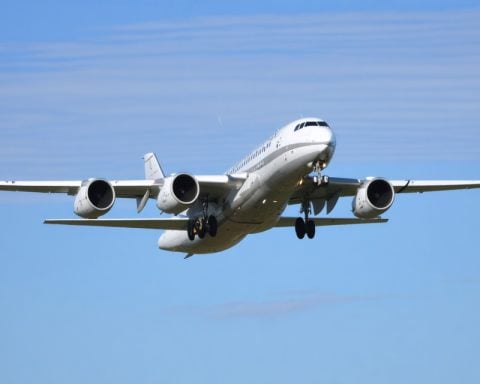OneWeb has announced an ambitious plan to bolster its satellite fleet, unveiling intentions to launch an additional 20 satellites into Space. This move comes in light of the company’s desire to enhance global coverage and capacity, necessitating an increase in satellite count beyond the originally proposed numbers.
With the latest launch, OneWeb’s satellite tally now stands at 654, surpassing the initial target of 648. The decision to expand the fleet aims at ensuring comprehensive coverage while maintaining robust capacity, addressing any potential gaps that might have arisen due to the slightly lower-than-planned satellite deployment in previous missions.
Looking ahead, OneWeb envisions a grander scheme to deploy a total of 2,000 satellites, with the majority, around 1,280, slated to be the cutting-edge GEN2 models. These advanced satellites are anticipated to operate in a higher Medium Earth Orbit, offering increased data capacity and supporting revolutionary technologies such as 5G mobile services and enhanced navigation features, aligning with the evolving demands of the market and the technological landscape.
The strategic placement of satellites in higher orbits presents both advantages and challenges. While wider Earth coverage could be achieved, potential drawbacks such as performance issues, particularly latency, may arise. However, balancing the deployment of satellites in different orbits, catering to latency-sensitive applications in Low Earth Orbit and data-intensive activities in Medium Earth Orbit, could pave the way for optimized satellite operations and service provision.
Despite facing financial constraints, OneWeb remains committed to its satellite expansion plans, driven by the vision to stay at the forefront of innovation and satellite technology. The company’s future trajectory is intertwined with the evolving dynamics in the satellite industry, including potential collaborations with entities like the EU’s proposed IRIS 2 LEO constellation, underscoring the significance of strategic partnerships and industry developments in shaping OneWeb’s future endeavors.
OneWeb’s Vision for Future Satellite Expansion and Key Considerations
As OneWeb progresses with its ambitious satellite expansion plans, several important questions come to light regarding the company’s future trajectory and the challenges it may encounter along the way.
What role will the additional 20 satellites play in OneWeb’s global coverage strategy?
The new batch of 20 satellites will further enhance OneWeb’s existing fleet, contributing to improving global coverage and capacity. By bolstering its satellite count, OneWeb aims to address any potential gaps in coverage and ensure a robust network infrastructure to meet growing demands for connectivity across diverse regions.
What are the key challenges associated with deploying 2,000 satellites, including the advanced GEN2 models?
One of the primary challenges of deploying a large number of satellites is managing orbital congestion and ensuring efficient coordination to avoid collisions in space. Additionally, the higher Medium Earth Orbit placement of GEN2 satellites introduces considerations related to latency and performance optimization, requiring strategic planning to balance coverage and capacity while mitigating potential drawbacks.
Advantages and Disadvantages of Satellite Deployment in Higher Orbits
The strategic placement of satellites in higher orbits offers advantages such as wider Earth coverage and enhanced data capacity, enabling the support of advanced technologies like 5G services and navigation features. However, challenges such as increased latency and performance issues may arise, necessitating a careful balance between orbit types to optimize service delivery for different applications.
Financial Constraints and Future Prospects for OneWeb
While OneWeb faces financial challenges, the company remains dedicated to its satellite expansion plans, driven by a commitment to innovation and technological advancements. Collaborations with entities like the EU’s IRIS 2 LEO constellation underscore the potential for strategic partnerships to shape OneWeb’s future endeavors and position the company at the forefront of the evolving satellite industry landscape.
In conclusion, OneWeb’s future satellite expansion plans carry both opportunities and challenges as the company strives to navigate the complexities of the space sector while meeting the demands of a rapidly evolving market. By addressing key considerations and leveraging strategic partnerships, OneWeb aims to realize its vision of providing global connectivity through an enhanced satellite network infrastructure.
For more information on OneWeb’s satellite initiatives and industry developments, visit their official website at oneweb.world.



















